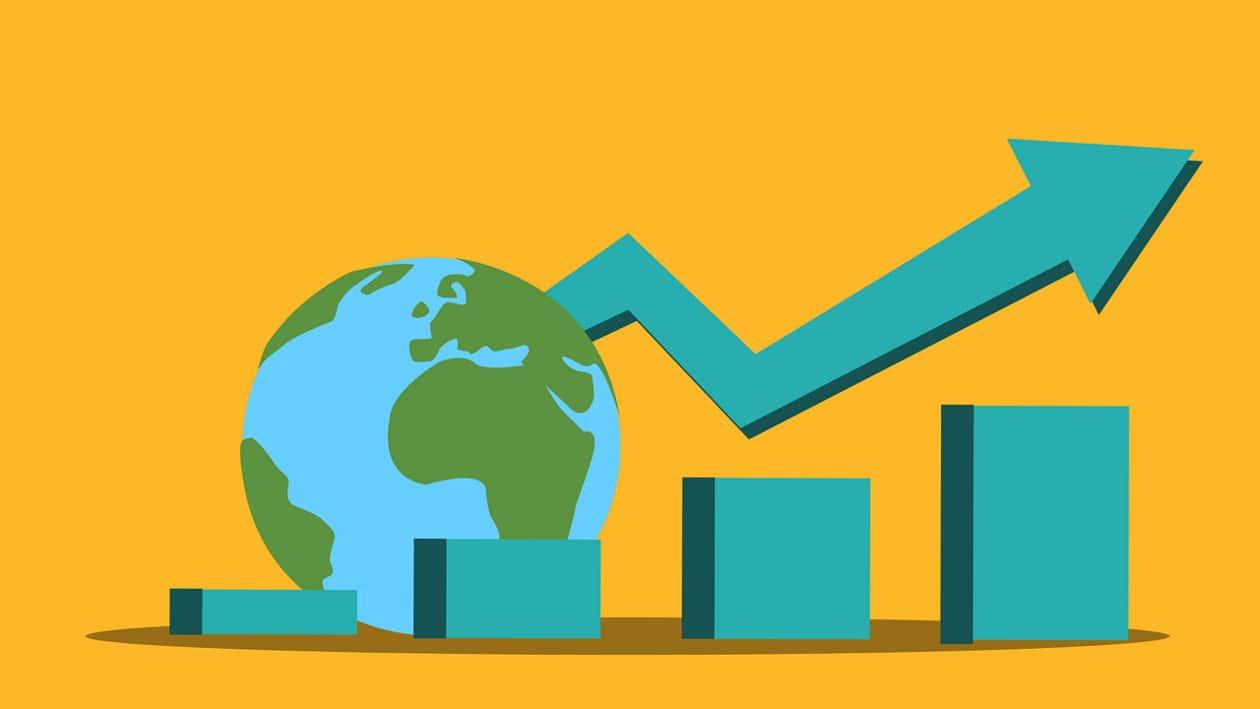Global brokerage house Morgan Stanley said that India is set to become the world’s third-largest economy and stock market by the end of this decade. It expects the Indian stock market to nearly treble its market capitalisation to grow 11 percent annually to $10 trillion by the end of the ongoing decade (2030), on the back of strong economic growth.
According to the brokerage, the Indian economy will become the third-largest in the world by 2030 and will drive nearly 20 percent or one-fifth of the world’s growth as it sees current global trends benefiting the local economy.
It expects the country's GDP to surpass $7.5 trillion, more than double of the current levels by 2031, adding around $500 billion per annum on an incremental basis in the next decade.
“India has the conditions in place for an economic boom fuelled by offshoring, investment in manufacturing, energy transition, and advanced digital infrastructure,” the brokerage firm said in a note.
According to the bank, the four global trends of demographics, digitalization, decarbonization and deglobalization are favouring the 'New India'.
The brokerage firm also expects the per capita income of the country to more than double to $5,242 by 2031. The brokerage further pointed out that India is emerging as a key anchor of Asian and global growth.
"Over 2022-23, India will contribute 28 percent and 22 percent of Asian and global GDP growth. In the coming decade, India will likely contribute about a fifth of global growth. As we lay out in this Bluepaper, we are constructive on India’s structural story and see a number of factors that have been put in place over the past three years to position India well for the coming decade," it noted. India is already the world's fifth-largest economy, and we forecast that it will become the third-largest by 2027, added MS.
However, as per MS, the key risks to this view include a prolonged global recession or sluggish growth, adverse geopolitical developments, domestic politics and policy errors, shortages of skilled labor, and steep rises in energy and commodity prices.
Morgan Stanley sees financial services, automobile and auto ancillary, healthcare services, industrials, real estate and exporters as the key investment theme for investors over the next decade.
Key investment themes:
Financial services: As per the brokerage, industry growth will be driven by a lending boom, improved insurance pricing, greater penetration, and sophisticated tech infrastructure.
Consumer discretionary (including autos, auto parts and healthcare services): Gains from rising disposable income, market reorganization and technology, noted MS.
Industrials, domestic materials and real estate: It further stated that the capex boom was driven by defense indigenization, energy, infrastructure, the internet, materials (especially cement), and, most importantly, manufacturing.
Exporters: Rising exports from the diversification of supply chains away from Europe and China and increased offshoring of services to India, said MS.
The brokerage expects India's manufacturing pie to increase 3x by 2031. A shift in government policy towards supporting investment, alongside the transition to a multipolar world, is set to alter India's economic structure in the coming decade, said MS. It estimates that manufacturing as a share of GDP will rise from 15.6 percent currently to 21 percent by 2031, which implies manufacturing value rises from US$447bn to US$1,490bn.
It also expects India's export market share to more than double by 2031. It expects India's export market share can rise to 4.5 percent by 2031 from 2.2 percent in 2021. This is based on the assumption that India's exports rise at an 11.6 percent CAGR over the next 10 years, noted MS.
On the infra front, the brokerage predicts infrastructure spending to increase from 4.6 percent of GDP in 2020 to near the previous peak of 7-7.5 percent by 2031.
The government’s thrust to push local manufacturing through Make in India is likely to see manufacturing's share of GDP rise to 21 percent by 2031, implying an incremental $1 trillion of manufacturing opportunity, it further said.
Another major area of development for India is e-commerce, noted MS. "E-commerce gained significant traction during the pandemic as lockdown restrictions curtailed physical buying. We expect e-commerce penetration to nearly double to 12.3 percent by 2031," predicted the brokerage. Internet users in India are also seen increasing to 960 million from 650 million, while online shoppers may grow to 700 million from 250 million over the next 10 years, it informed.
